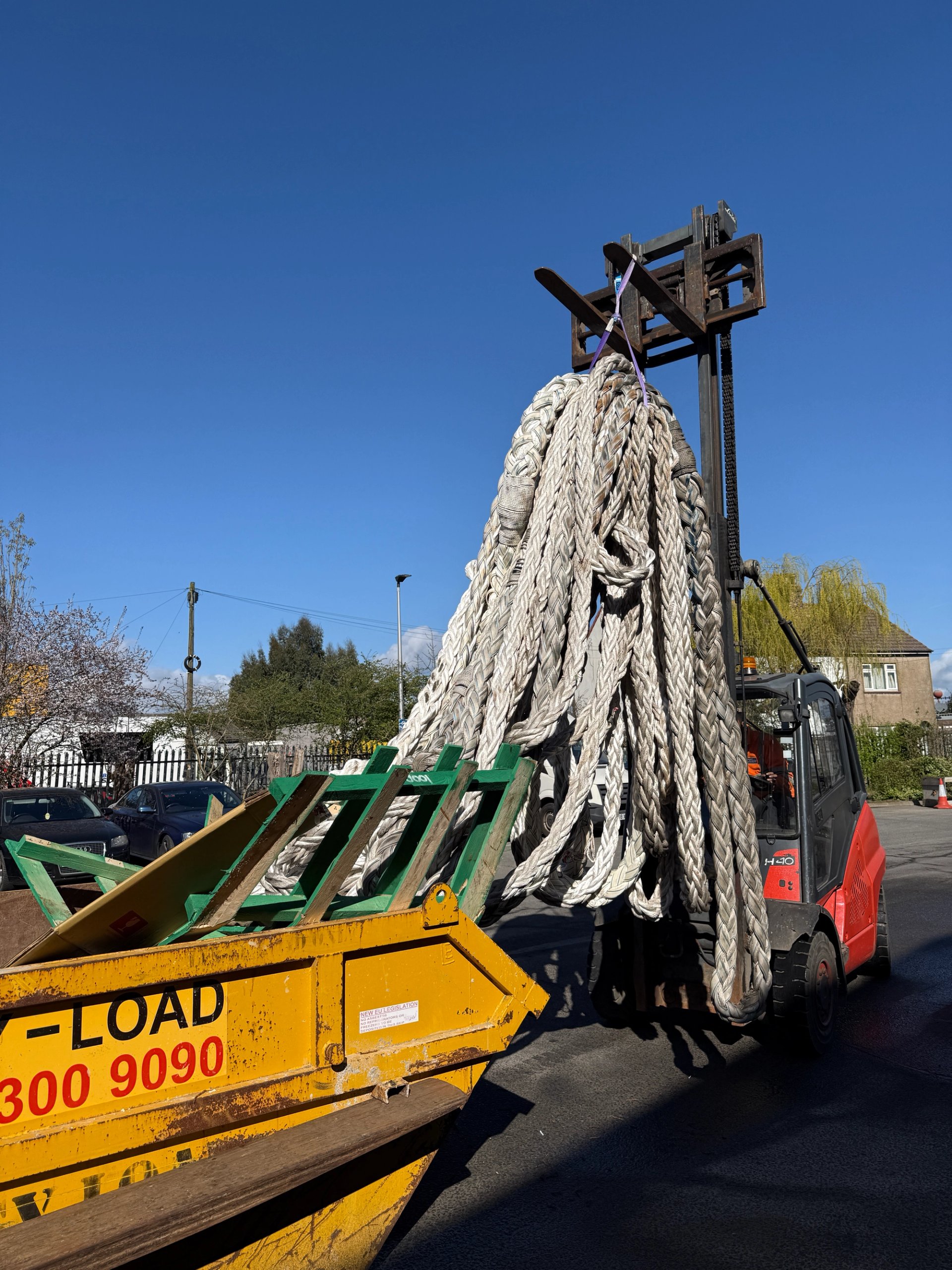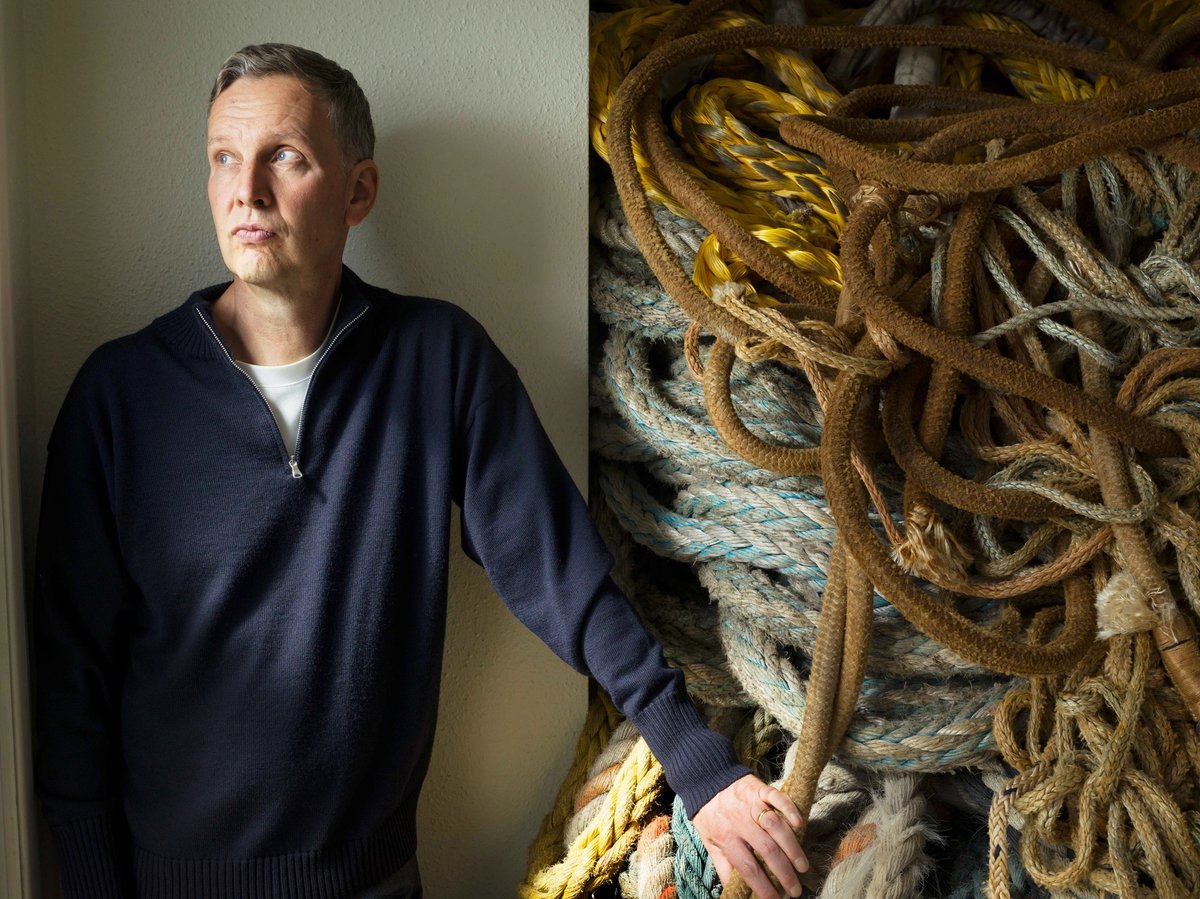Money—£1m plus VAT, to be precise—for old rope is the premise for David Shrigley’s latest exhibition, which opens at Stephen Friedman gallery in London tomorrow (14 November). Over the past eight months, the Turner Prize-nominated artist has collected around ten tonnes, or 20 miles-worth, of rope from major seaports, climbing schools, tree surgeons, offshore wind farms, scaffolders, window-cleaning firms and ports. He has also combed smaller lengths himself from shorelines across the UK.
The rope, which has been intensively cleaned by Shrigley’s studio, has been installed in four enormous piles—one in each of the Cork Street gallery’s rooms. A neon sign in the window reads “exhibition of old rope”.
Shrigley says he conceived of the idea specifically for the commercial gallery context. Describing his price tag as more of a “provocation”, the artist says he thinks £1m for “a giant artwork, pound for pound or kilo for kilo, represents excellent value”. But, as he points out, “for the person who isn’t an art insider, it probably seems like a ridiculous price”.
In a depressed market, ten tonnes of old rope is a hard sell for any dealer, however Shrigley is confident his gallery will make a real attempt to find a home for his installation. “It would surprise me if somebody bought it, but you never know,” he says. “Either way, it’s important to have a price; there’s a price to every artwork.”
The gallery’s owner Stephen Friedman told the BBC that the work could go to a private collection, an institution or a foundation. “We will find a good home for it,” he adds. While Shrigley’s work is in part a tongue-in-cheek poke at the market—in this instance, he thinks the main thing he is subverting is his own commercial interest. “I’d probably be a lot better off just doing some paintings but making this kind of work and having these kinds of conversations are part of the joy of it,” he says.

Rope being collected in Dartford, UK
Courtesy of David Shrigley
For Shrigley, joy and humour underpin much, if not all, of his creative output. “It’s the same thing motivating me to make this curious project where I get to fill a gallery with rope as it was when I was a child in school making a painting,” he says. “My attitude is, ‘What happens if I do this? What will it be like?’ And that’s the same attitude children have when making a painting of a dinosaur. For me, there’s something really joyful about making an artwork, whatever that is.”
Shrigley’s latest work is also highly conceptual. He describes the piles of rope as “like Tony Cragg sculptures—except they very much aren’t”. Installing the work, he adds, was an interesting process; the rope was more or less piled where it was pulled from giant sacks. “It’s a real non-aesthetic installation, but at the same time you can’t really escape from the aesthetics of it, the rope becomes an intriguing object in itself," Shrigley says.
Among the lengths of rope are 20cm-thick cables made from Kevlar that are used to drag cruise ships, as well as slim cords used for marker buoys, longlines and crab and lobster pots. The rope itself, apart from a few pieces fabricated from jute, is mostly made from synthetic polyester and nylon lines—making it very hard to recycle.
Globally, an estimated 640,000 tonnes of discarded marine rope and fishing nets enter the ocean every year, creating a major environmental issue. In some instances, nets and ropes are shredded and turned into threads to make clothes and other new products—but not typically in the art world. But then again, Shrigley is not a typical artist. As he puts it: “What do you do with stuff that you can’t get rid of? You make it into art.”




